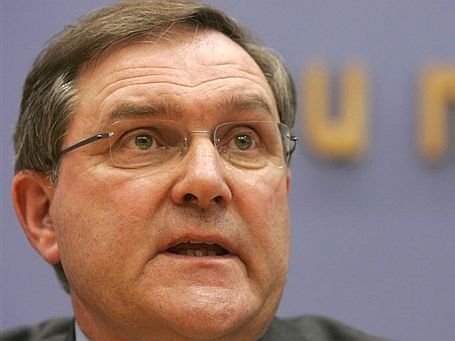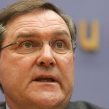
NATO’s Response Force, Other Planned Capabilities Stillborn
Publication: Eurasia Daily Monitor Volume: 6 Issue: 38
By:

NATO’s crisis symptoms are multiplying in the run-up to the Alliance’s 60th anniversary summit, scheduled to be held from April 2 to 4 on both sides of the Franco-German border. The crisis is unacknowledged, much less addressed in any systematic way, by allied leaders in Brussels and Washington, amid transitions in the political leadership in both places. The allied defense ministers’ meeting, held in Cracow on February 19 and 20 in preparation for the NATO summit cast some public light on a deepening crisis.
The Cracow ministerial meeting discussed turning the NATO Response Force (NRF) into a reality, if only as a miniature of the original design for a worldwide deployable force. The alliance badly needs to show some palpable results at its forthcoming summit. The NRF remains largely hypothetical, however, after eight years of NATO rhetoric about expeditionary missions in distant combat theaters.
Various NATO countries disagree from a variety of perspectives over the NRF’s size, missions, deployments, and national troop contributions to the force. Some member countries would favor committing the NRF (when it reaches some level of strength) in some role or another to Afghanistan or for other distant operations. Most of the new member countries, however, favor assigning the NRF for the defense of the alliance’s territory and keeping this force at permanent readiness, to deter or defend against possible Russian military provocations.
For its part, Germany-according to Defense Minister Franz-Josef Jung at the Cracow meeting-opposes viewing the NRF as a reserve force, just as Berlin opposes viewing Russia as a possible source of military threats. Furthermore, German troops in the NRF could apparently not participate in combat missions without specific authorization by the Bundestag (DPA, February 19, 20; Frankfurter Allgemeine Zeitung, February 23).
At the Cracow meeting, British Defense Secretary John Hutton proposed drawing on the NRF to create a standing, 3,000-strong "allied solidarity force," committed to defending the alliance’s territory against possible attacks. It is clearly understood, though not stated, that the territory is that of new member countries and the hypothetical attacks could only come from Russia. Geared for Article Five operations, the proposed force would be a light one of a rapidly deployable type, including 1,500 troops in permanent readiness and another 1,500 in training.
Such small troop numbers implicitly suggest that the British proposal is intended as a means to another end. According to Hutton, authorizing the creation of such a force would make it easier for the alliance’s new member countries to increase their troop contingents in Afghanistan without fearing [Russian] provocations against them at home. These allies would be reassured that the proposed solidarity force would be available, dedicated to their homeland defense, and without competing calls on its priorities (Financial Times, February 19).
U.S. Defense Secretary Robert Gates came to Cracow with a different idea for the NRF, however. Reflecting the Obama administration’s political priorities of the moment, Gates proposed deploying the NRF temporarily to Afghanistan during that country’s elections. Afghanistan’s electoral campaign is expected to start as much as possible in May, and the balloting is expected in August. Deploying what had been billed as high-readiness NRF combat troops in a new role of election guardians could, however, further erode NATO’s credibility as a military organization in Afghanistan and not only there.
NATO had originally announced the NRF as a top priority project at the alliance’s 2002 Prague summit, with a force goal of 25,000 including land, air, and sea components, to be deployable within five days anywhere in the world. The NRF was declared operational at NATO’s Riga summit in 2006, albeit with more modest troop goals. Even that declaration turned out to be premature, however. The NRF remains in an embryonic state amid disagreements about its basic mission. With many member countries unwilling to provide troops, NATO is now talking about a far smaller, "core" NRF. Meanwhile, this force has yet to be deployed in a combat zone with other NATO troops. NRF elements have only been used a few times, contrary to its designation, for humanitarian missions, for example, in the post-hurricane Katrina relief mission in the United States.
At the moment NATO continues to lack airlift capability of its own for any rapidly deployable combat force that the alliance might yet field. The 2002 Prague summit had also announced a Capabilities Initiative, followed in due course by a Security Investment Program, a Helicopter Initiative, and other programs. They have yet to take off, however, mainly because a majority of West European countries are under-spending on defense.
At the Cracow ministerial meeting, NATO Secretary General Jaap de Hoop Scheffer blamed the old principle of "letting the costs lie where they fall" for the inadequate funding of those projects. De Hoop Scheffer called for a more innovative approach, starting with the issue of funding the Helicopter Initiative (news conference, February 20, www.nato.int, accessed February 21). The discussion on funding principles has been going on for several years within NATO, but it remains inconclusive.




